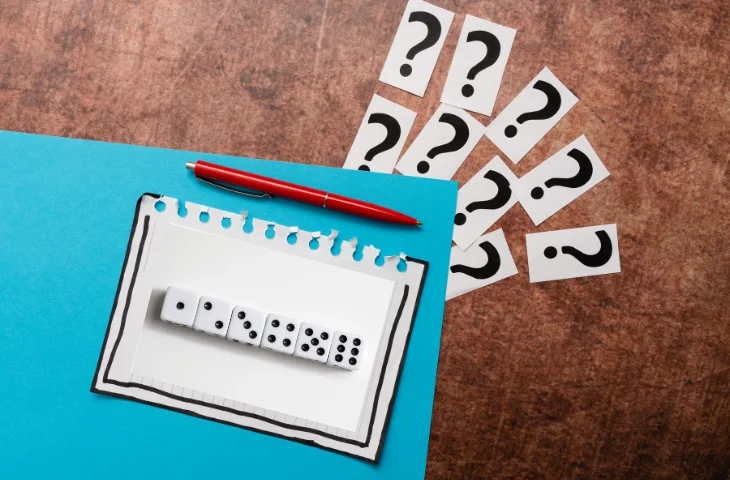Cube, Cuboid, and Dice reasoning is a fundamental and popular topic in competitive exams like SSC, Banking, and RRB. This topic tests your ability to visualize 3D objects, understand their properties, and decode information quickly. In this blog, we will cover the essential concepts, formulas, quick tricks, solved examples from recent exams, and provide a downloadable PDF to help you master this topic effectively.
What Is Cube, Cuboid, and Dice in Reasoning?
Cube, Cuboid, and Dice reasoning involves questions based on 3-dimensional shapes primarily cubes, cuboids, and dice. These questions require candidates to interpret the net, faces, edges, and corners, and to solve problems about painted faces, hidden faces, or dice number arrangements.
Why does it appear in exams?
This topic appears because it tests a candidate’s spatial visualization skills and logical reasoning. It evaluates how well one can imagine and manipulate 3D objects mentally—an important skill in many real-life and professional scenarios.
Skills required:
- Visualization of 3D objects from 2D representations
- Logical deduction
- Understanding of cube and cuboid properties
- Dice number pattern recognition
Why Is Cube, Cuboid, and Dice Important in Competitive Exams?
Cube, Cuboid, and Dice reasoning is important because it appears regularly with moderate difficulty. The questions are generally short but require accuracy and practice.
| Exam | No. of Questions | Difficulty |
| SSC CGL / CHSL | 1–2 | Easy |
| IBPS PO / SBI PO | 1–2 | Moderate |
| RRB NTPC / Group D | 1 | Easy |
| State PSC / Police | 1–2 | Moderate |
This topic is a scoring one if practiced well and can boost your reasoning section marks.
Cube, Cuboid, and Dice Reasoning Short Notes
This section summarizes the core concepts to keep handy during revision.
| Term | Description |
| Cube | All sides equal; 6 square faces |
| Cuboid | Rectangular faces; opposite faces equal |
| Dice | Cube with numbers 1 to 6 on faces |
| Opposite Faces in Dice | Sum of opposite faces = 7 |
| Painted Faces Problem | Counting painted/unpainted faces after cutting |
| Hidden Faces | Faces not visible from a given viewpoint |
Cube, Cuboid, and Dice Reasoning Concept
Concepts to be used for cube, cuboid, and dice reasoning questions are as follows:
| Concept | Details |
| Cube Faces | 6 equal square faces |
| Cuboid Faces | 6 rectangular faces; opposite faces equal |
| Dice Opposite Sides | Numbers on opposite faces sum to 7 |
| Painted Cube Problem | Count painted cubes after slicing |
| Visible & Hidden Faces | Faces visible or hidden from different angles |
What Are the Types of Cube, Cuboid, and Dice Questions in Reasoning?
Types of questions being asked in the exam are as follows:
- Direct: Simple face counting, visible faces
- Puzzle-based: Painted faces after cutting cubes or cuboids
- Coded (symbol-based): Dice number representation with symbols or colors
- Mixed-concept reasoning: Combining dice and cube properties with other reasoning topics
Cube, Cuboid, and Dice Formulas for Reasoning
Formulas used to solve these types of questions are as follows:
- Dice Opposite Faces: Sum = 7
- Number of smaller cubes after cutting a cube into n³ parts: n³
- Number of cubes with 3 painted faces (corners): 8 (always)
- Number of cubes with 2 painted faces: 12 × (n – 2)
- Number of cubes with 1 painted face: 6 × (n – 2)²
- Number of cubes with no painted faces: (n – 2)³
Cube, Cuboid, and Dice Tricks for SSC CGL and Other Exams
Tricks to solve cube, cuboid, and dice reasoning questions are as follows:
- Always remember opposite faces of dice add up to 7.
- For painted cube questions, identify corners (3 faces), edges (2 faces), and face-centers (1 face).
- Use net diagrams to visualize cube unfolding.
- Start solving dice problems by locating the face with the highest number.
- In cuboids, focus on length, breadth, and height relationships while cutting.
- Reverse engineer: work backward from the question to the figure.
Solved Cube, Cuboid, and Dice Questions from 2024–25 Exams
- SSC CGL 2024 Tier 1
Q: A cube is painted on all faces and cut into 27 smaller cubes. How many cubes have exactly two painted faces?
A: 12
Explanation: Number of cubes with two painted faces = 12 × (n-2) = 12 × (3-2) = 12
Source: SSC CGL 2024 Tier 1 – Memory-Based - IBPS PO Prelims 2024
Q: If 3 is on the top face of a dice and 6 is in front, which number is on the bottom?
A: 4
Explanation: Opposite of 3 is 4 (since 3+4=7). Bottom face is opposite of top.
Source: IBPS PO Prelims 2024 - RRB NTPC 2025
Q: A cuboid of dimension 4 × 3 × 2 is cut into cubes of side 1. How many cubes have exactly one face painted if only the outside is painted?
A: 34
Explanation: Using formula for cuboids.
Source: Based on recent shift question, RRB NTPC 2025
Cube, Cuboid, and Dice Concepts for Bank Exams
In bank exams like IBPS and SBI PO, dice questions often appear in coded or symbol-based formats, requiring mental rotation and logic tree analysis. For example, a dice question may show three adjacent faces and ask what number lies opposite a given face.
Example:
If the face showing 2 is adjacent to 3 and 5, which number is opposite to 3?
(Solution involves visualizing the dice and using opposite face rules.)
Common Mistakes to Avoid while Solving Cube, Cuboid, and Dice
While solving, avoid these common errors:
- Ignoring opposite face sum rule (7 for dice).
- Confusing visible faces with painted faces after cutting.
- Not visualizing the 3D figure properly from 2D nets.
- Overlooking corner and edge distinctions in painted cubes.
- Rushing without checking all given conditions or directions.
FAQs
A: Practice visualization and memorize dice opposite faces. Use elimination and logic steps.
A: Yes, but usually 1–2 moderate-level questions appear in reasoning sections.
A: It is not recommended, as these are easy and scoring questions with regular appearance.
A: Questions where dice faces or cubes are represented by symbols/colors instead of numbers, requiring decoding.
- Delhi Police HC Ministerial Syllabus 2025, CBT, Typing & Computer Test
- Delhi Police HC Ministerial Exam Pattern 2025, Check CBT, PE&MT Pattern
- BOI Apprentice Salary 2025, Check Stipend Details
- Upcoming Bank Exams 2026: SBI, IBPS, IBPS RRBs, Insurance Exams
- Bank of India Credit Officer Syllabus 2025, Check Exam Pattern
- Punjab and Sind Bank LBO Interview Result 2025 Out, Download PDF

Hi, I’m Aditi. I work as a Content Writer at Oliveboard, where I have been simplifying exam-related content for the past 4 years. I create clear and easy-to-understand guides for JAIIB, CAIIB, and UGC exams. My work includes breaking down notifications, admit cards, and exam updates, as well as preparing study plans and subject-wise strategies.
My goal is to support working professionals in managing their exam preparation alongside a full-time job and to help them achieve career growth.
